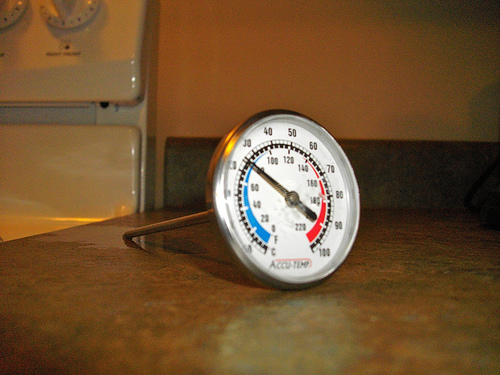
It's not just an Archer punchline, it's a key guide to food safety. And yet, many people are unaware of the concept. That may be part of why America has one of the highest rates of food-borne illness in the developed world. (Although our industrial farming infrastructure, coupled with lax federal oversight, certainly bears the brunt of the blame, there.)
The "Danger Zone" is between 40 degrees and 140 degrees Fahrenheit. This is the temperature range where bacteria flourish in your food. Bacteria in foods at these temperatures can double in as little as 20 minutes. (Yuck!)
The general rule is, food should never be in the Danger Zone for more than two hours. In fact, two hours is pushing it, if you ask me. I aim for an hour or less. Frankly, barring the occasional family emergency, the only excuse for leaving food in the Danger Zone longer than that is sheer laziness. Just get up and put away your leftovers! It could literally save your life.
The clock starts ticking as soon as you take your food out of the fridge, off the stove, or out of the oven. It's pretty obvious stuff, but there are a few quirks:
ONE. If you have a "massy" food (like casserole or mashed potatoes) and you stick it right in the fridge, it can take so long to cool down in the center that it can easily be in the Danger Zone for 6-8 hours, depending on how well your fridge does cold.
Let these foods cool on the counter for at least half an hour, stirring it every few minutes to even out the temperature. Consider breaking it down into smaller containers for fridge storage. If you have to store it in one big container, stir it frequently at first until it all cools down.
TWO. Don't thaw meat by leaving it out on the counter. Either thaw it in the fridge, or thaw it in the sink in a bowl of cool running water for 30-60 minutes.
Image courtesy Flickr/Beth77

1 comments